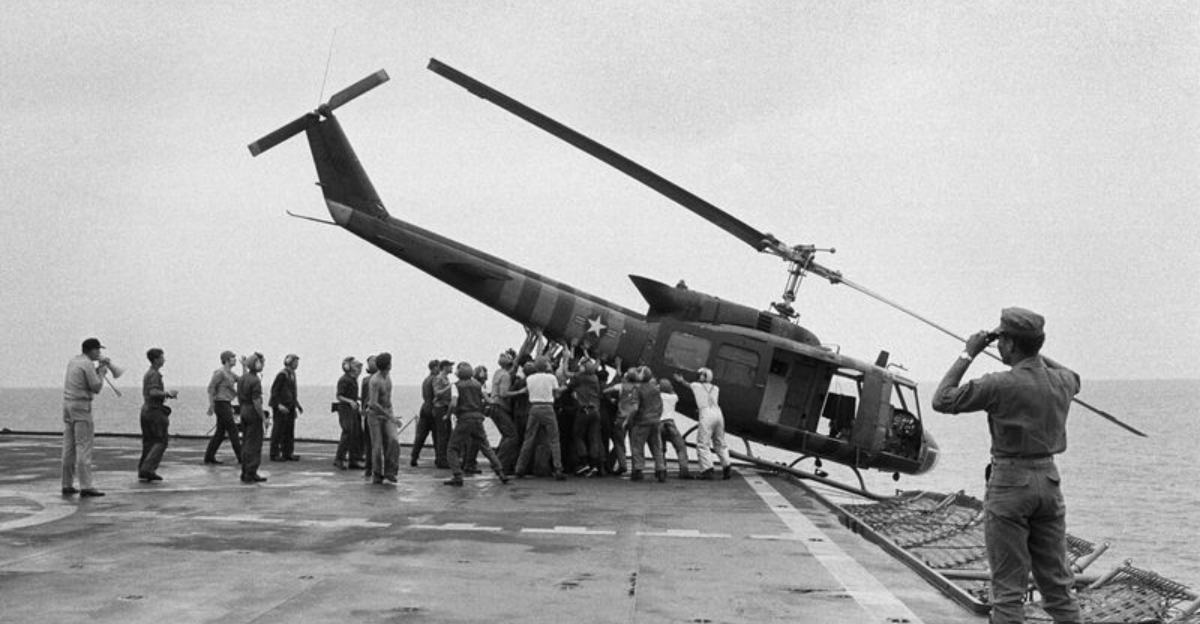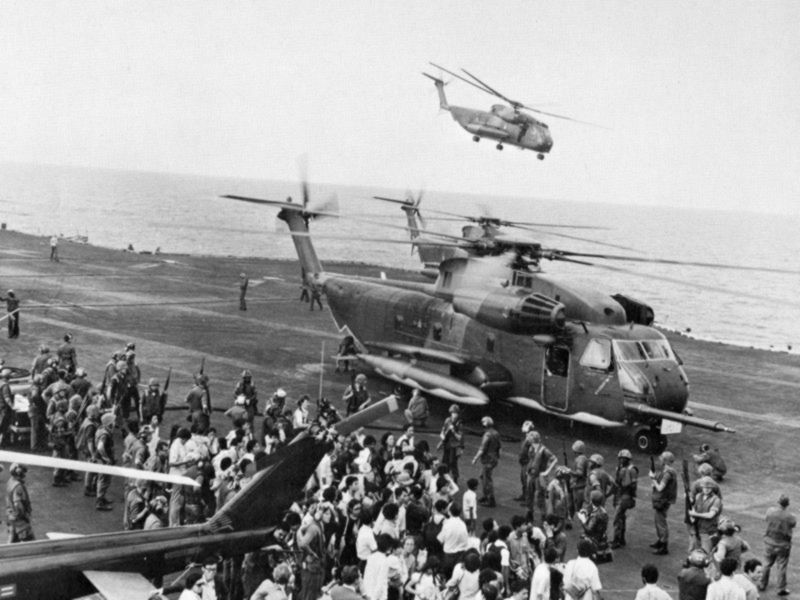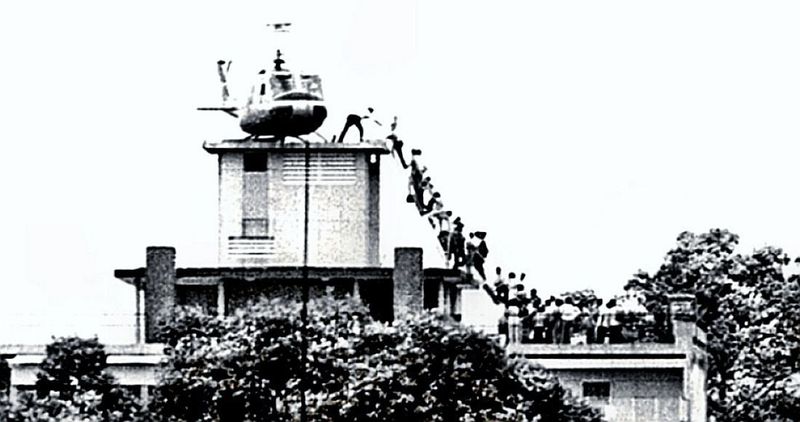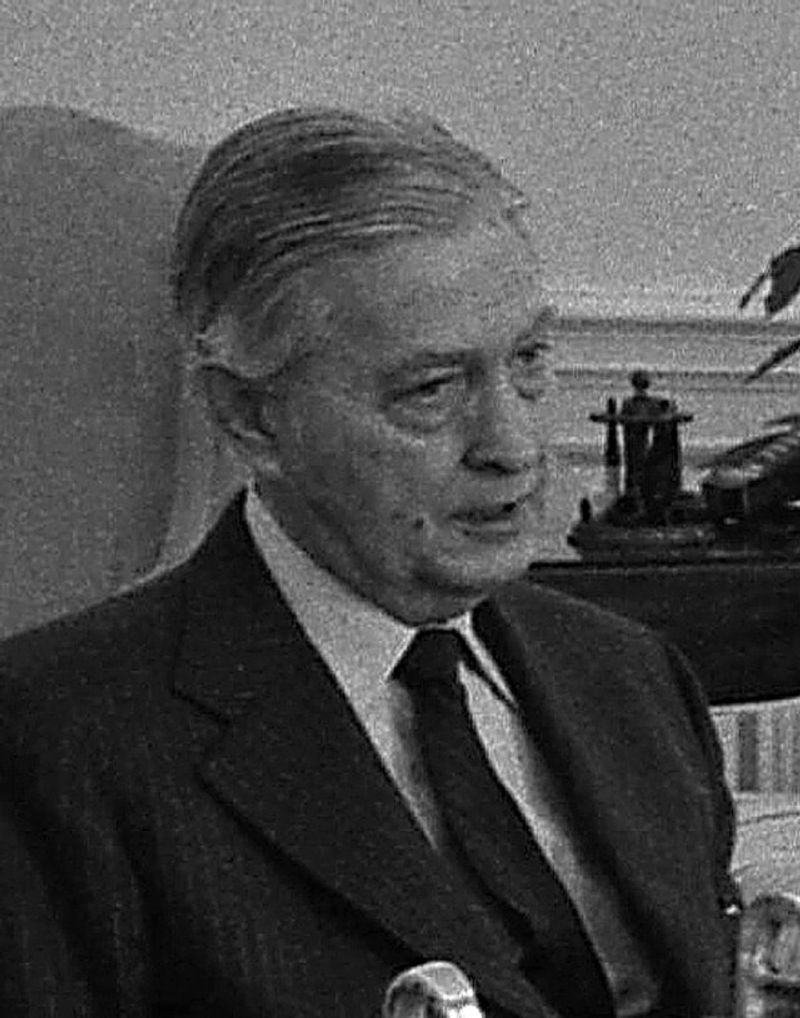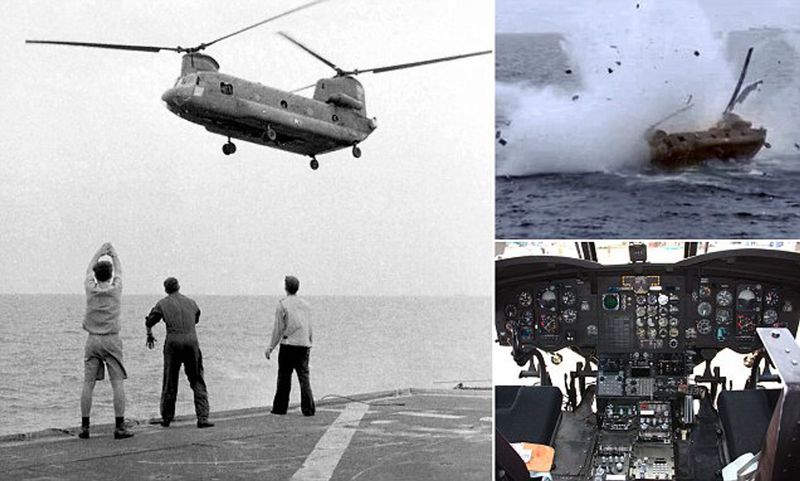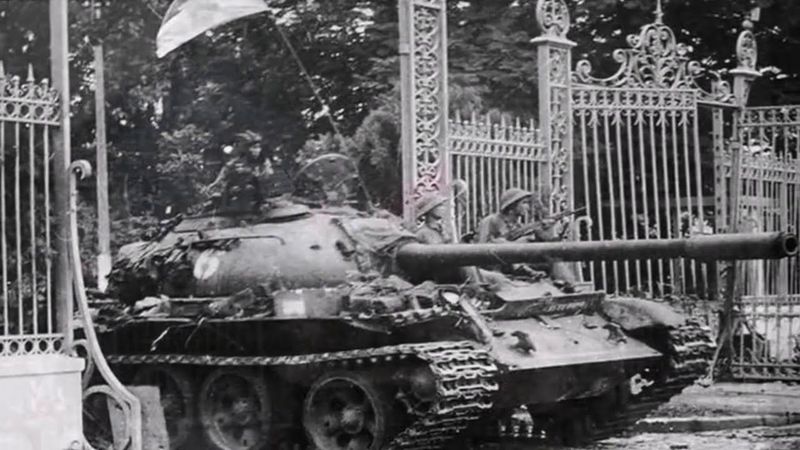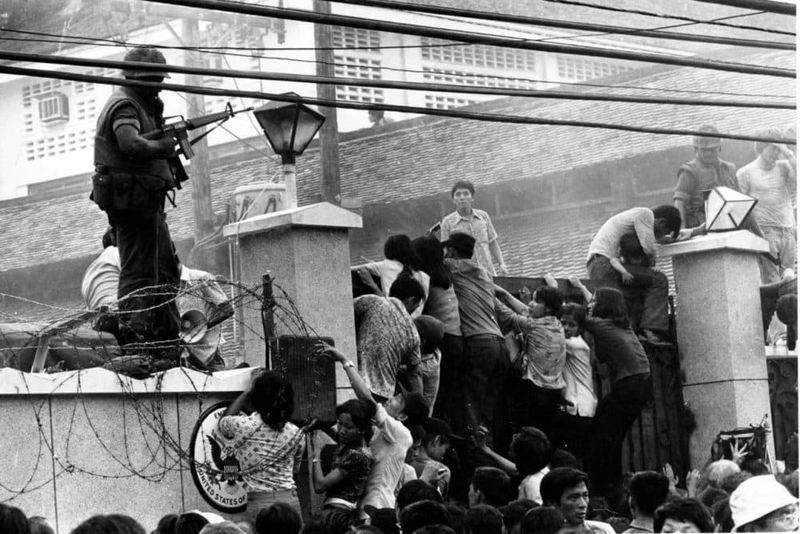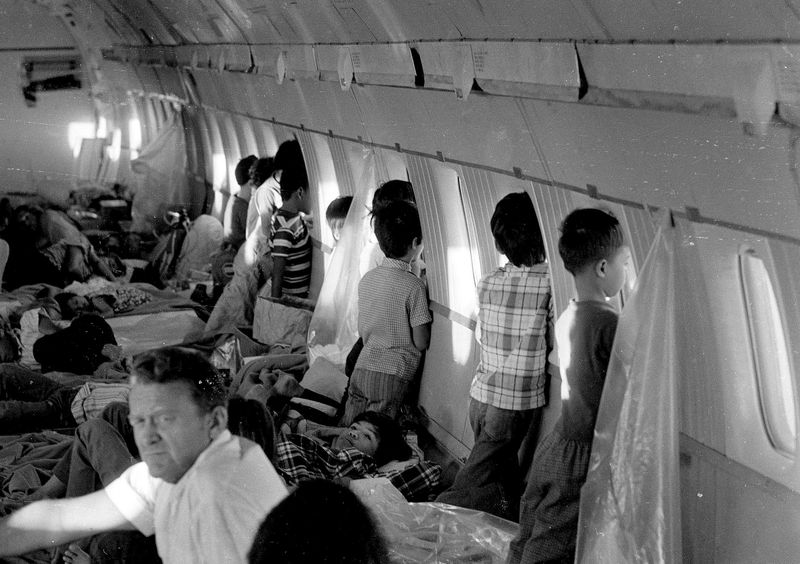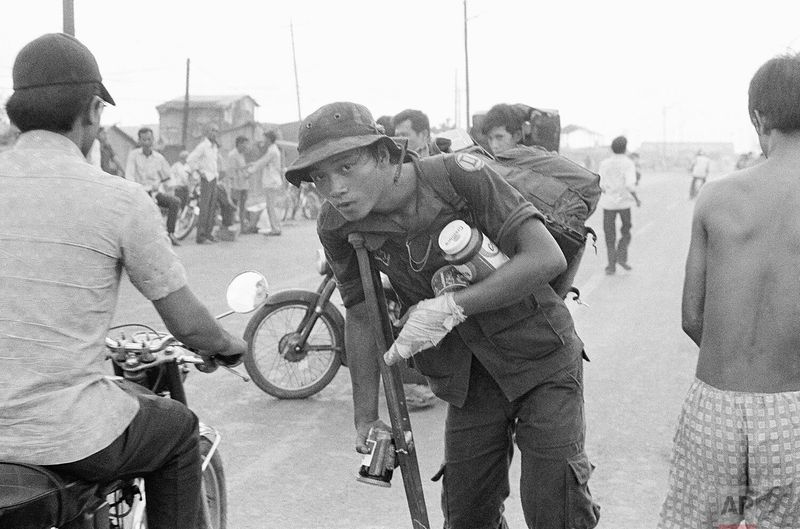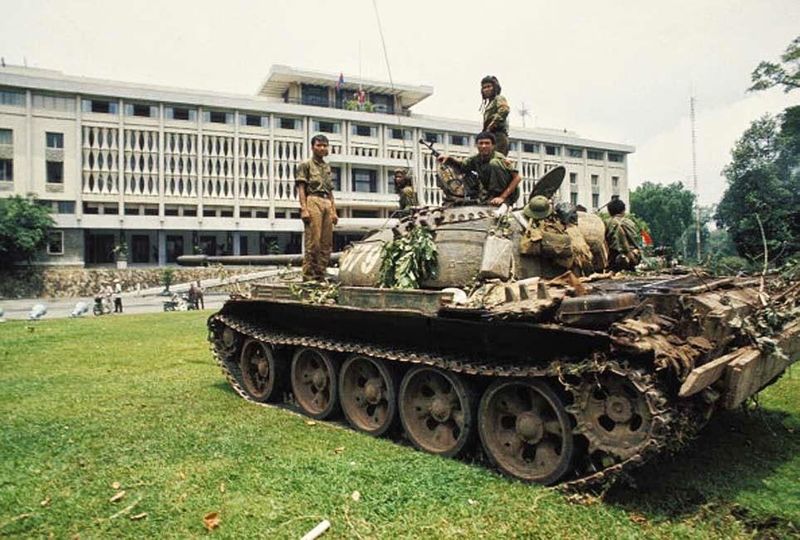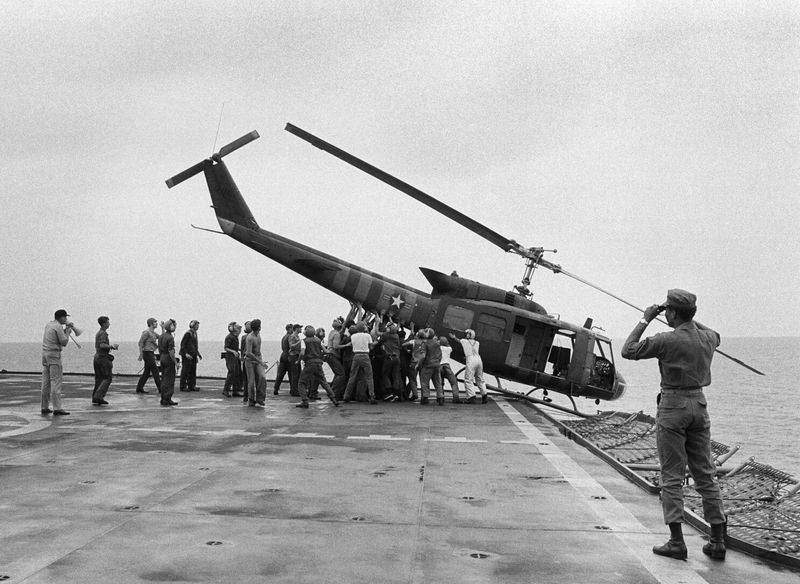April 30, 1975 marked a historic turning point as Saigon, the capital of South Vietnam, fell to North Vietnamese forces.
This dramatic event ended America’s longest war at that time, a conflict that claimed over 58,000 American and millions of Vietnamese lives.
The chaotic evacuation from Saigon rooftops by helicopter became one of the most powerful symbols of American military defeat in history.
1. Operation Frequent Wind: America’s Largest Helicopter Evacuation
The final evacuation of Saigon was code-named Operation Frequent Wind, becoming the largest helicopter evacuation in history. Over 18 hours, more than 70 helicopters transported approximately 7,000 people to safety aboard U.S. Navy ships waiting offshore.
Pilots flew continuous missions despite dangerous conditions and exhaustion. Some choppers had to be pushed overboard after landing on aircraft carriers to make room for more incoming aircraft.
2. The Iconic Rooftop Photo That Shocked America
A single photograph captured the desperation of the evacuation – a Huey helicopter perched precariously on a Saigon apartment rooftop as evacuees climbed a narrow ladder. Though widely believed to show the U.S. Embassy evacuation, it actually depicted an apartment building used by CIA personnel.
Photographer Hubert van Es snapped this image for UPI, creating what would become one of the most defining images of American withdrawal and defeat in Vietnam.
3. Ambassador Graham Martin’s Costly Delay
U.S. Ambassador Graham Martin stubbornly refused to accept South Vietnam’s imminent collapse, delaying evacuation orders until the last possible moment. His reluctance stemmed partly from a desire not to trigger panic and partly from misplaced hope that South Vietnam might still survive.
Martin finally ordered the embassy evacuation only when North Vietnamese tanks were rolling into Saigon. His delay left thousands of Vietnamese allies stranded, many facing harsh consequences under the new communist regime.
4. The USS Kirk’s Miraculous Rescue of South Vietnamese Helicopters
The destroyer escort USS Kirk became the stage for an extraordinary rescue when South Vietnamese pilots flew their families to safety in military helicopters. With no landing space available, pilots hovered precariously while dropping off passengers, then ditched their aircraft in the ocean.
One pilot even managed the impossible – hovering his massive Chinook helicopter alongside the Kirk while his family jumped to safety. The crew saved 157 people from these helicopters in a display of remarkable improvisation.
5. Radio Saigon’s Secret Signal: Bing Crosby’s “White Christmas”
American evacuation planners needed a discreet signal to alert U.S. citizens that the final evacuation had begun. They chose Bing Crosby’s “White Christmas” played on Armed Forces Radio, followed by the announcement: “The temperature in Saigon is 105 degrees and rising.”
This unusual coded message in the tropical heat of Vietnam triggered Americans to gather at designated pickup points. Many Vietnamese who recognized the signal’s meaning also rushed to evacuation sites, hoping for rescue.
6. The Last Marines: A Desperate Rooftop Defense
The final 11 Marines defending the U.S. Embassy faced a terrifying situation as thousands of desperate Vietnamese stormed the compound. They maintained a perimeter on the embassy roof while destroying sensitive documents and coordinating the last flights out.
Master Sergeant Juan Valdez was the last Marine to board the final helicopter at 7:53 AM on April 30, 1975. The team had held their position for nearly 24 hours straight, fighting exhaustion while keeping order among panicked evacuees.
7. Baby Airlift Tragedy: Operation Babylift’s Devastating Crash
Just weeks before Saigon fell, the U.S. launched Operation Babylift to evacuate orphaned Vietnamese children. Tragically, the first flight crashed shortly after takeoff on April 4, 1975, killing 138 people, including 78 children.
Despite this horrific start, the operation continued, eventually transporting over 3,000 children to new lives abroad. Many were adopted by American families, though controversy later emerged when some “orphans” were discovered to have living parents who had sent them away hoping for better lives.
8. The Abandoned South Vietnamese Soldiers: Betrayal at the Embassy Gates
Thousands of South Vietnamese soldiers who had fought alongside Americans for years found themselves abandoned in the final evacuation. Many discarded their uniforms in the streets, hoping to blend in with civilians to avoid capture by North Vietnamese forces.
At the U.S. Embassy, gates were eventually closed to Vietnamese allies, with Marines under orders to admit only Americans. The haunting images of desperate South Vietnamese military personnel pleading at embassy walls became powerful symbols of America’s broken promises.
9. North Vietnamese Tanks Roll In: The Fall’s Final Moments
At 10:24 AM on April 30, North Vietnamese Army tank #843 crashed through the gates of Independence Palace, the seat of the South Vietnamese government. Tank commander Bui Tin accepted the surrender of General Duong Van Minh, who had been president for only 43 hours.
“I have been waiting since early this morning to transfer power to you,” Minh said. Bui Tin famously replied: “There is no question of your transferring power. Your power has crumbled. You cannot give up what you do not have.”
10. Operation Frequent Wind’s Forgotten Heroes: The Vietnamese Pilots
While American helicopter pilots received deserved recognition for the evacuation, South Vietnamese Air Force pilots performed equally heroic acts. Many flew their families and others to safety before ditching their aircraft in the ocean or at makeshift landing zones.
Some Vietnamese pilots managed to fly massive Chinook helicopters offshore with up to 50 people crammed aboard. Upon reaching U.S. ships, they hovered precariously while their passengers jumped to safety, then ditched their aircraft in the sea, often with no rescue plan for themselves.
